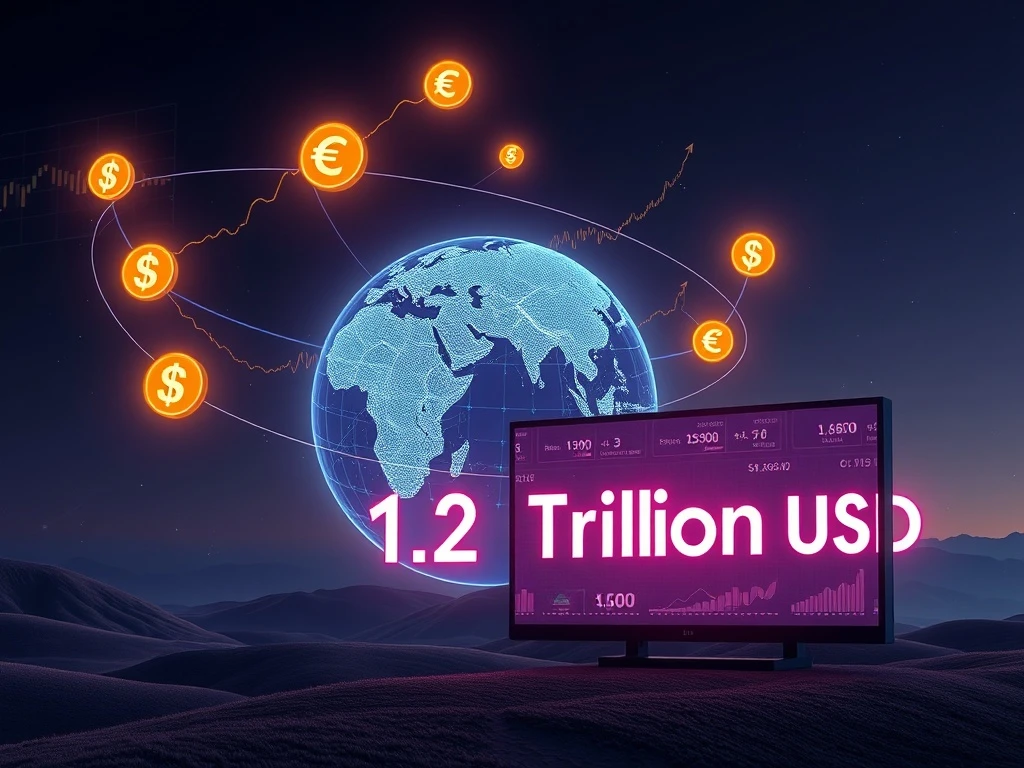Unveiling the Future: Coinbase Predicts a Trillion-Dollar Stablecoin Market by 2028

The cryptocurrency world constantly evolves. Now, a significant **Coinbase prediction** forecasts massive growth. The leading crypto exchange suggests the **stablecoin market** will reach an astonishing $1.2 trillion by 2028. This bold projection signals a transformative era for digital finance. What factors drive this ambitious outlook? We delve into the details.
Coinbase Forecasts Explosive Stablecoin Market Growth
Coinbase recently released a compelling report. It predicts the total US dollar-pegged **stablecoin market** will swell significantly. Experts project a market cap of $1.2 trillion by 2028. This forecast, published on Thursday, highlights renewed global interest in stablecoins. Governments worldwide are increasingly considering their integration. This growth relies heavily on comprehensive **crypto regulations** in the United States.
This projected expansion carries significant implications. Coinbase notes that satisfying demand from stablecoin issuers requires substantial US Treasury issuance. Specifically, this would necessitate $5.3 billion per week over the next three years. Stablecoin issuers often use short-term **US Treasury bills** as backing collateral. Therefore, this demand creates a direct link between digital assets and traditional finance.
Impact on US Treasury Yields and the Coinbase Prediction
The demand for **US Treasury bills** from stablecoin issuers could influence financial markets. Coinbase suggests this issuance schedule might cause a minor, temporary drop. Three-month Treasury yields could see about a 4.5 basis point (BPS) reduction. This contradicts some analyst predictions. Many analysts anticipated a more significant reduction in interest on US government debt. However, Coinbase maintains a measured view.
The exchange clarified its stance: “We think the forecast doesn’t require unrealistically large or permanent rate dislocations to materialize; instead, it relies on incremental, policy-enabled adoption compounding over time.” This statement underscores a belief in gradual, policy-driven growth. It suggests a sustainable expansion rather than sudden market shocks. This perspective strengthens the overall **Coinbase prediction**.
Key Catalysts: Robust Crypto Regulations
A major driver for this anticipated growth is regulatory clarity. The passage of the GENIUS bill is particularly important. This comprehensive regulatory framework targets stablecoins in the US. It is set to take effect in January 2027. Coinbase identifies this legislation as a crucial catalyst. Such clear rules build trust and encourage broader adoption. Furthermore, the US legislative efforts have spurred other nations into action. Many countries now consider legalizing their own stablecoins. They aim to remain competitive with the dollar in the digital age. This creates a global push for structured digital asset frameworks.
The **stablecoin market** thus becomes a battleground for financial innovation. Regulatory developments are key to unlocking its full potential. The US Treasury has also called for public comment on the GENIUS stablecoin bill. This signals a collaborative approach to shaping future financial landscapes. Related: US Treasury calls for public comment on GENIUS stablecoin bill.
Stablecoins Emerge as Major Buyers of US Government Debt
Private stablecoin issuers have already become significant players. Companies like Tether and Circle are now top buyers of US government debt. They have surpassed traditional sovereign investors. These include countries such as South Korea, the United Arab Emirates (UAE), and Germany. This trend highlights the growing financial power of the **stablecoin market**. Their demand for **US Treasury bills** makes them influential market participants.
This shift demonstrates a new dynamic in global finance. Digital asset companies are directly impacting national treasuries. They provide liquidity and absorb government debt. This strengthens their position within the broader financial ecosystem. Their role continues to grow. This makes them indispensable in modern debt markets.
The Global Race for Digital Dollar Competition
Dollar-denominated stablecoins currently dominate the market. However, other countries are actively exploring their own versions. They aim to supplement traditional fiat currencies. This movement signifies a broader shift towards **digital dollar competition**. Nations want to secure their economic influence in the digital realm. South Korea’s Financial Services Commission (FSC) is a prime example. This government regulator announced a comprehensive stablecoin regulatory bill. It will be submitted to the legislature in October. This move underscores their commitment to digital currency innovation.
Even China, with its historical opposition to private cryptocurrencies, shows signs of change. Reports suggest China may allow yuan-backed stablecoins to circulate. Analysts believe any rollout would likely be limited. It might focus on special economic zones like Hong Kong. International currency markets would also be a target. This cautious approach still signals a significant policy evolution. The global race for digital currency dominance is clearly heating up. Magazine: Stablecoins in Japan and China, India mulls crypto tax changes: Asia Express.
This international interest highlights a pivotal moment. The future of global finance is becoming increasingly digital. Nations are adapting to new technologies. They seek to maintain their competitive edge. The stablecoin sector grows as other countries signal they are joining the race. Don’t expect China’s stablecoin to touch the mainland. Banning virtual currency kiosks is no solution to fraud. EU exploring Ethereum, Solana for digital euro launch: FT. Bitcoin price charges to $116K as Fed’s Powell hints at interest-rate cut.
Conclusion: A Trillion-Dollar Future for Stablecoins
Coinbase’s ambitious **Coinbase prediction** paints a clear picture. The **stablecoin market** is on the cusp of unprecedented growth. It is driven by clear **crypto regulations** and increasing demand for **US Treasury bills**. The global push for **digital dollar competition** further fuels this expansion. As countries embrace digital currencies, stablecoins will play an even larger role. They will reshape both traditional finance and international economic relations. This marks a new era for digital assets. Their integration into the global financial system continues to accelerate.








